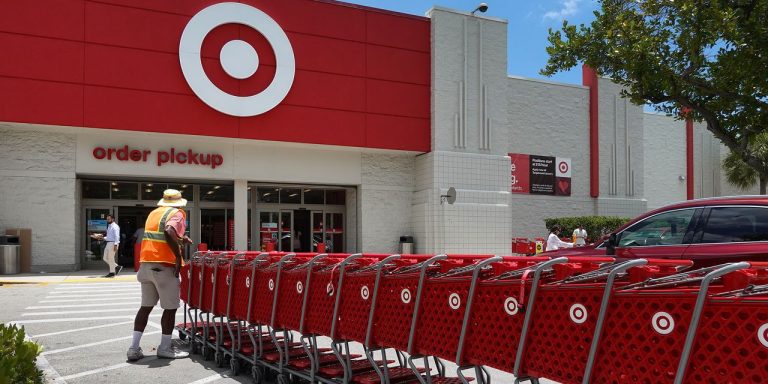Target, Home Depot, TJX, and Walmart report earnings this week.
Joe Raedle/Getty Images
For Morgan Stanley analyst Alex Straton, the coming retail earnings season brings a sense of déjà vu with an extra fillip of caution.
Straton projects the reports, which begin rolling in on Tuesday, will bring a flurry of higher-than-expected earnings that will come as concerns persist that consumers are growing more cautious about their spending.
“So what does this mean for EPS?” she wrote in a recent note to clients. “Upside ahead, much like the last few quarters, but potentially not to the same magnitude.”
The
SPDR S&P Retail
ETF (ticker: XRT) has gained 9% this year, lagging behind the
S&P 500
‘s 16% gain.
Home Depot
(ticker: HD) kicks off retail earnings on Tuesday, followed by
Target
(TGT),
TJX
(
TJX
), and
Walmart
(WMT).
Economists, analysts, and retailers have been warning for a long time that consumers will be spending less. That prediction failed to pan out for most of 2022 and the first half of 2023, but recent signs suggest the slowdown has finally arrived.
The latest round of profit reports from restaurants showed a new pattern. Earnings were higher than expected but revenue fell short, largely because consumer demand is fading. That trend could continue into the next two weeks.
“I do think what we’ll see and hear from the companies is that sales have slowed and are slowing a little bit from earlier in the year, but are still holding up pretty well,” said D.A. Davidson analyst Michael Baker. Margins and profits can still rise, he said, because lower costs for freight and production have created wiggle room.
To be sure, some parts of the industry may hold up better than others. The Street is still bullish on the off-price retailers, such as TJX, which stand to gain if consumers are more cautious but still have some money to spend. The big-box retailers, which consumers see as offering them their best bang for their buck, are still riding high.
Walmart,
for example, closed at a record high on Friday.
Retailers with higher exposure to discretionary spending are on more tenuous footing heading into earnings season, especially given the results that have already come out.
Levi Strauss & Co.
(LEVI),
Under Armour
(UAA),
Ralph Lauren
(RL), and
Lulu’s Fashion Lounge Holdings
(LVLU), for instance, all posted mixed reports. Levi’s and Lulu’s lowered their full-year guidance.
Under Armour
maintained it, but lowered its U.S. sales outlook.
“The macro effects of higher inflation and a slowing U.S. economy has put increased pressure on the price-sensitive consumer,” said Chip Bergh, Levi’s chief executive, in a July call with analysts.
Home improvement retailers could also be in a bit of a bind this earnings season as high interest rates drag on sales of housing and discourage people from renovating.
With all the uncertainty over how consumer spending shapes up in the second half of the year, investors will be listening closely to management commentary and scrutinizing any changes in financial forecasts.
Investors will also be on the lookout for news about inventory shrink, the term retailers use to refer to losses of products, Baker said. Shrinkage can encompass theft by staff or customers, administrative errors, and damage. With rising levels of retail theft, margins have come under pressure, meaning that any updates on theft mitigation strategies will be received well.
Write to Sabrina Escobar at [email protected]
Read the full article here









